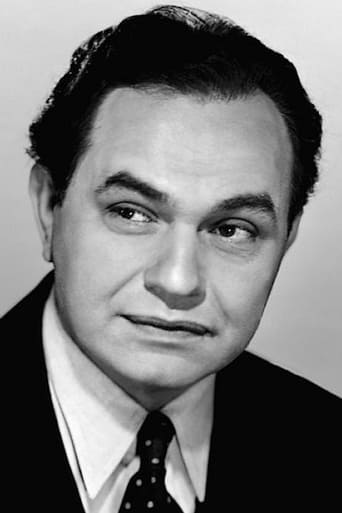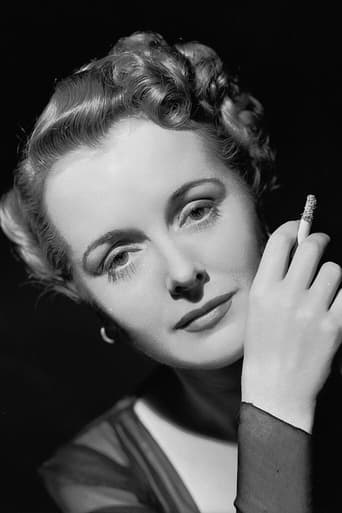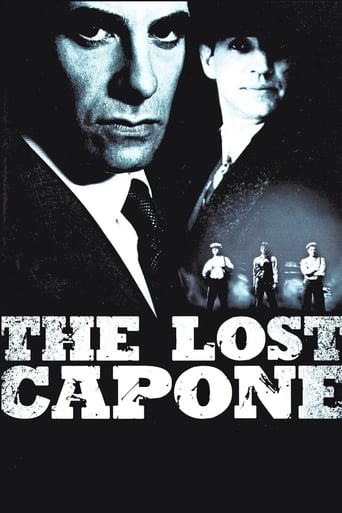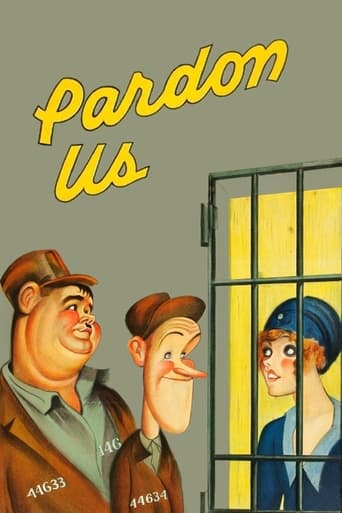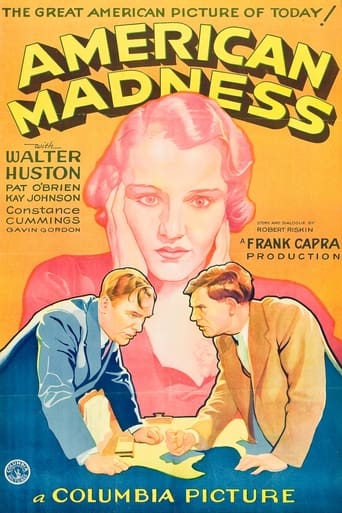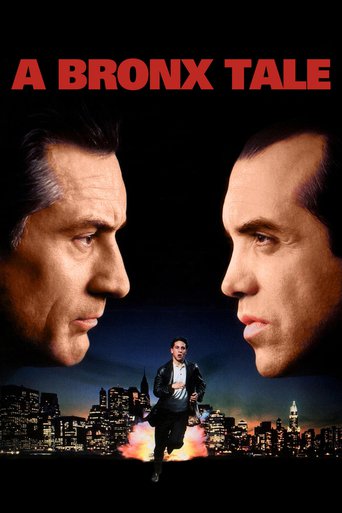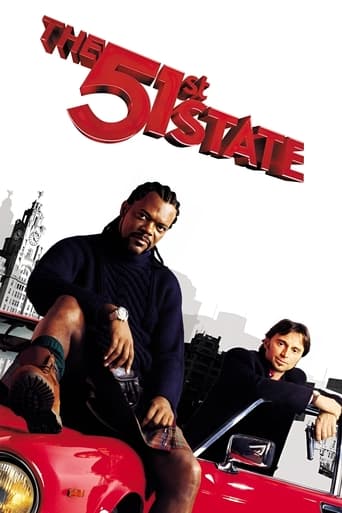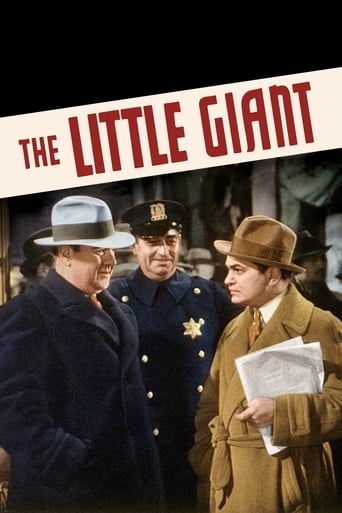
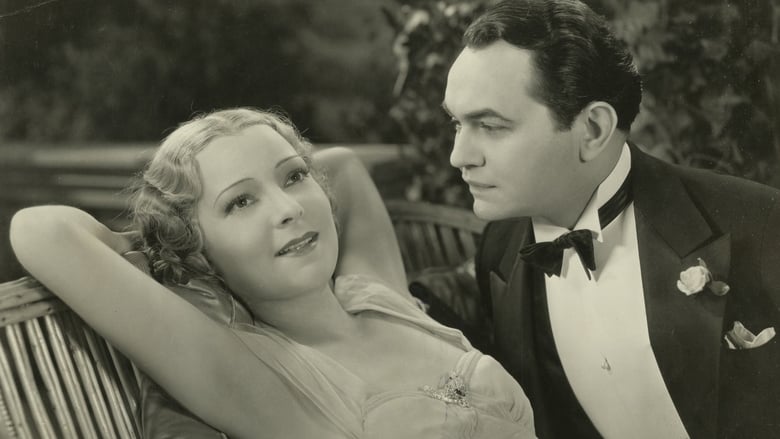
The Little Giant (1933)
Prohibition is ending so bootlegger Bugs Ahearn decides to crack California society. He leases a house from down-on-her-luck Ruth and hires her as social secretary. He rescues Polly Cass from a horsefall and goes home to meet her dad who sells him some phony stock certificates. When he learns about this he sends to Chicago for mob help.
Watch Trailer
Cast
Similar titles
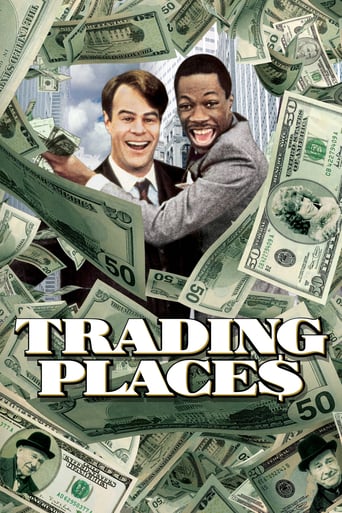
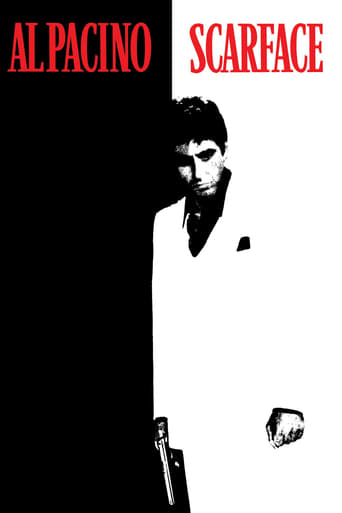
Reviews
i must have seen a different film!!
everything you have heard about this movie is true.
Although I seem to have had higher expectations than I thought, the movie is super entertaining.
There's no way I can possibly love it entirely but I just think its ridiculously bad, but enjoyable at the same time.
. . . sums up the plot of THE LITTLE GIANT. This flick demonstrates that while hoodlums such as LITTLE CAESAR, SCARFACE, PUBLIC ENEMY, and Bugs Fenner might snuff a few American thugs, the REAL gangsters wear suits, and mugs such as Charles Keating, Kenneth Lay, and Bernie Madoff are far worse than the Al Capones of this world as they murder the American Dream for thousands of honest Working People at a clip. The Donald Handley Cass Family of California represents the Fat Cat U.S. One Per Centers in THE LITTLE GIANT. Pop, Ma, Sonny, and Sissy all are thieving weasels rotten to the core, willing to prostitute themselves in every way imaginable just to obtain a thousand times their fair share of America's Bounty so that they can enjoy a few hours of creature comforts prior to their Eternity of Burning Down Below. The man who would kill Bugs Fenner three years after portraying THE LITTLE GIANT, Edward G. Robinson, plays the Bugs character himself here--Jim "Bugs" Ahearn, to be exact. When he finds out how irredeemably rancid the Rich really are, Bugs realizes that the only way to deal with them is to give them a foretaste of their Roasting to Come, by literally holding their feet to the fire. Hot-Cha-Cha, as Jimmy Durante would say!
If anyone is looking for a great Mob Comedy, that really is a MOB Comedy, this is it. Spoilers: It is about a Bootlegger named Bugs Ahearn (Edward G. Robinson), and his second in commend Al Daniels(Russell Hopton), who decide to go straight after Prohibition ends, and move out to Beverly Hills and find out that the businessmen out there (Such as the Cass Family (Led by Father Donald Hadley (Barton Churchill), and not so sweet Polly (Helen Vinson)), who are far more crooked then the Mob ever was (They have a code of honor). The only person who knows the truth about how they are playing him as a sucker is Ruth Wayborn (Mary Astor), who has to act as his Personal Secretary, but really loves him. Mary knows the truth, because she was once rich, and they swindled her out of her fortune, so she has to rent out her mansion (Which Bugs did not know). When he finds out the truth about how gullible he was (They stuck him and many others with worthless stock certificates) he is so dejected, he gives a $15,000 wedding ring that he bought for Polly to a blind man, begging for money. One of the best scenes occurred in the DA's Office where he was told that not only was broke, but he would be going to jail for the swindle. The only way he could avoid this is get the money back. He asked the DA to let him make a call, and it went straight to the Boys in Chicago, and they could not wait to get back into action (Including boarding planes with Machine Guns). Not only did they got back all of the investors money plus interest, with heavy duty shakedowns (Including torture to a crook who refused to pay up), it was done in a way, that when the Mob took over the crooked investment company, with the assistance of Ruth (Who is good with numbers) they made sure it would be profitable for Bugs, his fellow mobsters, and the people who got their money back. The film ended with Robinson and Astor looking down from the mansion seeing gangsters on Polo Ponies, falling over themselves, and laughing about it. What is interesting is how Pre-Code it was: Including the torture scene, the DA not objecting to Robinson calling in the Mob (Showing gangsters as heroes would not be allowed a year later), Robinson referring to the rich as 'fags', and Al admitting he snorted Cocaine. Like the torture scene, no nos a year later. If you like Warner Bros Gangster films, and Robinson in particular, it should be a must see. Of course, it merits 10/10 Stars.
Part of Edward G. Robinson's longevity in movies was his ability to choose the occasional film that showed he could laugh at the tough characters he created. In "The Whole Town's Talking" (1935) and "A Slight Case of Murder" (1938) he successfully kidded his own genre but he did it first with "The Little Giant" (1933).He plays Bugsy Ahearn, a Chicago beer baron and the film begins with the election of President Roosevelt. That spells the end of prohibition but O'Hearn has already started making plans - reading books on ancient Greece by Plato (Pluto!!!), buying modern art, taking up golf, in other words getting "cultured"!! - he is determined to "crash society"!!! His gang is like one big happy family but after he and Al (Russell Hopton) go out to California, he finds he is swimming with sharks when he becomes entangled with the fortune hunting Cass family. He falls instantly in love with Polly (Helen Vinson) but each of the family fleeces him in different ways until the father sells him a worthless company. Of course they don't realise he has made his money bootlegging and when they do that is the only excuse they need to break Polly's engagement, flee the country and leave him holding the bag - but not before he sends for his old cronies to dispense some Chicago rough justice of his own.This movie is just so much fun - Edward G. Robinson almost over- powers the whole cast and he really struts his stuff and gives the movie going public exactly what they expected from him in 1933 but with the added bonus of laughs!!! Mary Astor is as usual gorgeous and fully up to Robinson as Ruth. She plays a once wealthy girl, whose father has been financially ruined and she is now reduced to renting out the family mansion to Ahearn. She becomes his unofficial teacher, showing him how to act, how to give dinner parties and also that not everyone is as horrible as the Casses. Helen Vinson played the fortune hunting Polly to perfection but, strangely, I found her not as attractive as she usually is. Berton Churchill had also perfected roles like the conniving Father Cass and he was excellent. Shirley Grey was another example of a pretty, talented actress who just didn't make it big - she played Ahearn's cast off mistress, Edith. It was nice to see Russell Hopton with a decent part in a grade A film. He has one of the best lines in the movie. When O'Hearn asks him if he has ever seen a painting like that before, he replies "Not since I stopped using cocaine!!!!!"Highly, Highly Recommended.
Although the early sound era presented some problems - such as stationary camera shots with the actors nailed to their marks, and minimal use of background music resulting in long stretches of torpor - by 1931 most of these bugs had been corrected; thus the pre-censorship period of '31-'34 is chockfull of some of the most vigorous, creative and satisfying movies of Hollywood's Golden Age, however little-known many of them may be. LITTLE GIANT is one such hidden gem. A lightning-paced gangster comedy from the Warner-First National studio (where speed and economy were stylistic hallmarks), it's fast, funny and flippant in a manner that the decayed virgins of the Hays Office would render, if not impossible, at least awfully difficult after '34. Edward G Robinson plays Bugs Ahearn, a Chicago bootlegger put out of business by Prohibition's repeal, who decides to relocate to California and buy his way into society. Once there, he's immediately preyed upon by the type of 'respectable' vipers & parasites his background has left him ill-equipped to recognize, let alone fend off. This 'fish-out-of-water' comedy benefits greatly from a cheerfully amoral tone and a slew of zesty performances, not least of them Mary Astor's as a busted heiress who is the only non-hood here who's on the level. The mix of slapstick and rat-a-tat verbal comedy, coming at you at fast as it does, works very well, and nobody was better at this kind of hectic farce than the woefully-underrated Roy del Ruth, who was one of a number of sure & steady craftsmen who hit their peaks only under the Warners' aegis. In Del Ruth's case, the coming of the Code (and his subsequent move to MGM) proved to be disastrous: though he continued to direct till the late 50s, his post-Warners work was so drained of zest and inspiration that he is hardly remembered at all today. Even the auteurist crowd dismisses him as a competent hack. But do yourself a favor and seek out everything he did prior to 1935, and you'll be rewarded with a body of work that will surprise you with its cynical bite and confident staging. They play as well today as they did the day they opened. (Highly recommended, besides GIANT, are BLESSED EVENT, LADY KILLER, EMPLOYEES ENTRANCE & TAXI.)
